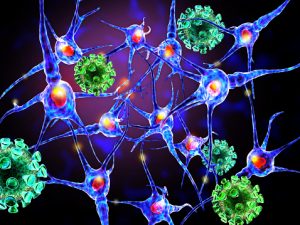
Previous research found that specific white blood cells, known as lymphocytes, congregate into tertiary lymphoid tissues (TLTs) in the brains of those with MS. Although the function of TLTs has been found, how they form and how they stay in the brain is still unclear.
The researchers found that TLTs were created by the presence of stromal cells, which produce intricate fibers. These cells create nets where T helpers 17 cells (a type of T cell) gather.
“While T cells are an important part of the body’s ability to ward off infection and disease, in autoimmune disorders, they can mistake healthy tissue for potential threats and respond by lashing out, causing damage. The team observed that this Th17 response resulted in the type of brain tissue inflammation associated with MS,” explained study lead Dr. Jen Gommerman.
Dr. Gommerman explained that although the findings do not fully explain the cause of multiple sclerosis, it offers clearer understanding of how the MS pathogen works. With further research we can continue to become closer to better understanding multiple sclerosis to develop a cure.